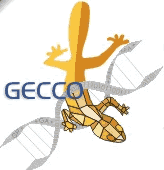

June 26 - 30, 2004
Saturday to Wednesday
Seattle, Washington, USA
Session: |
TUT - Tutorials |
Title: |
Multiobjective Optimization with EC |
Authors: |
Kalyanmoy Deb |
Abstract: |
Many real-world search and optimization problems from sciences and engineering are naturally posed as mathematical programming problems involving multiple objectives. The main difficulty in handling multiple conflicting objectives is that they result in a number of optimal solutions (known as Pareto-optimal solutions), instead of a single optimum. Due to the lack of suitable techniques for finding multiple optimal solutions by classical means, such problems are artificially converted into a single-objective optimization problem and solved. Unfortunately, the outcome of such methods is quite dependent on the adopted conversion procedure. In the recent past, evolutionary algorithms are proposed to solve these problems in a less-subjective and efficient manner. Instead of finding one solution at a time, evolutionary multi-objective optimization (EMO) methods find a number of Pareto-optimal solutions in one simulation and leave the decision-making task for later. Such techniques are increasingly getting popular in practice mainly because of two reasons: (i) a wide range of optimal solutions allows a better decision-making and (ii) optimal solutions reveal salient insights about the problem. Besides, EMO techniques are increasingly being applied to different kinds of search and optimization problems in their own rights. In this tutorial, besides quickly introducing the basic concepts of multi-objective optimization, a quick review of the state-of-the-art techniques practiced in this emerging field will be discussed. A number of case studies from engineering will be shown to clearly demonstrate the advantages of using EMO over classical methods. The research and application in EMO are comparatively new and offer numerous scopes for future investigations. Some salient research topics and some potential application domains of EMO will also be highlighted in this tutorial. |
HomeProgramSearchAuthor Index
SponsorsCommitteeContact Us
